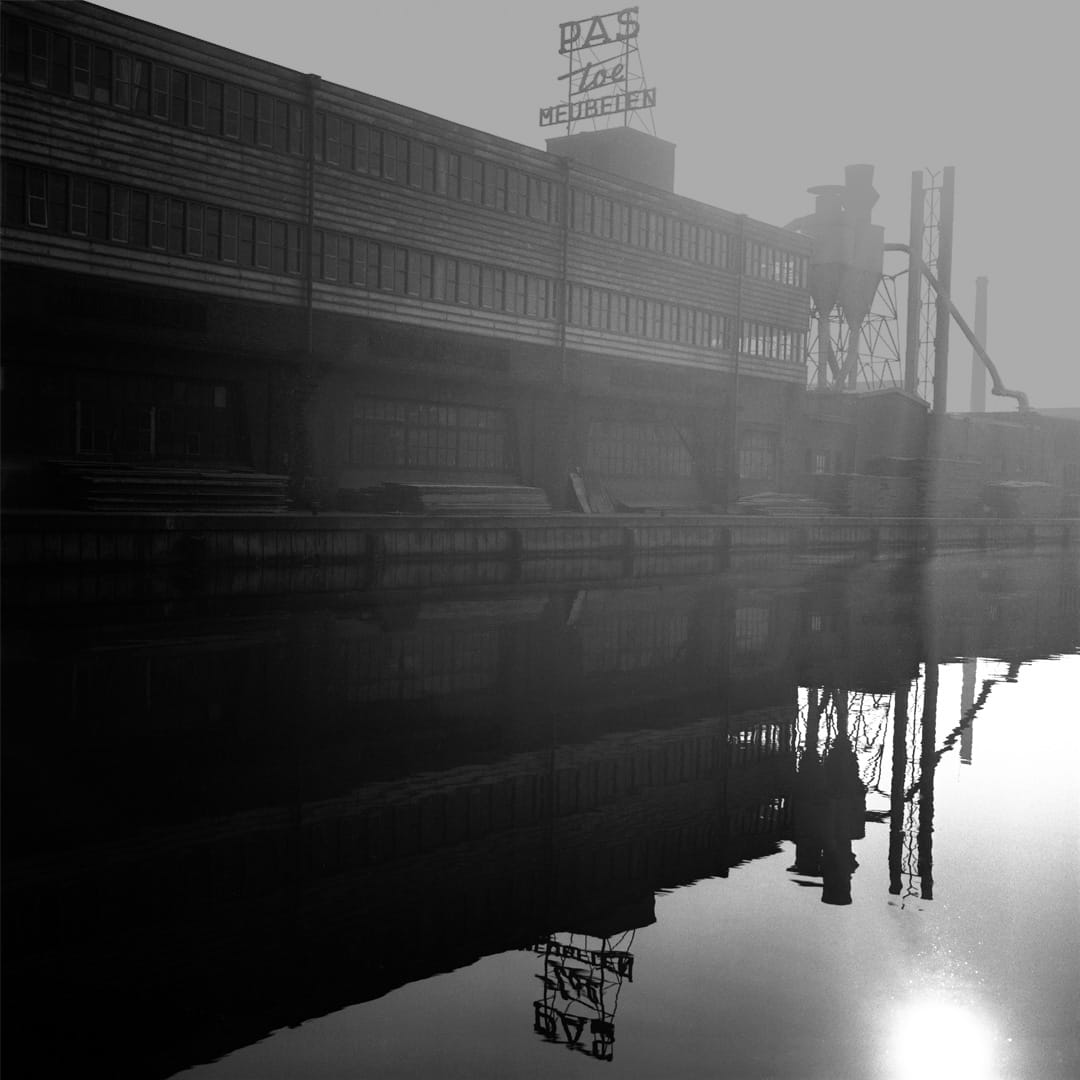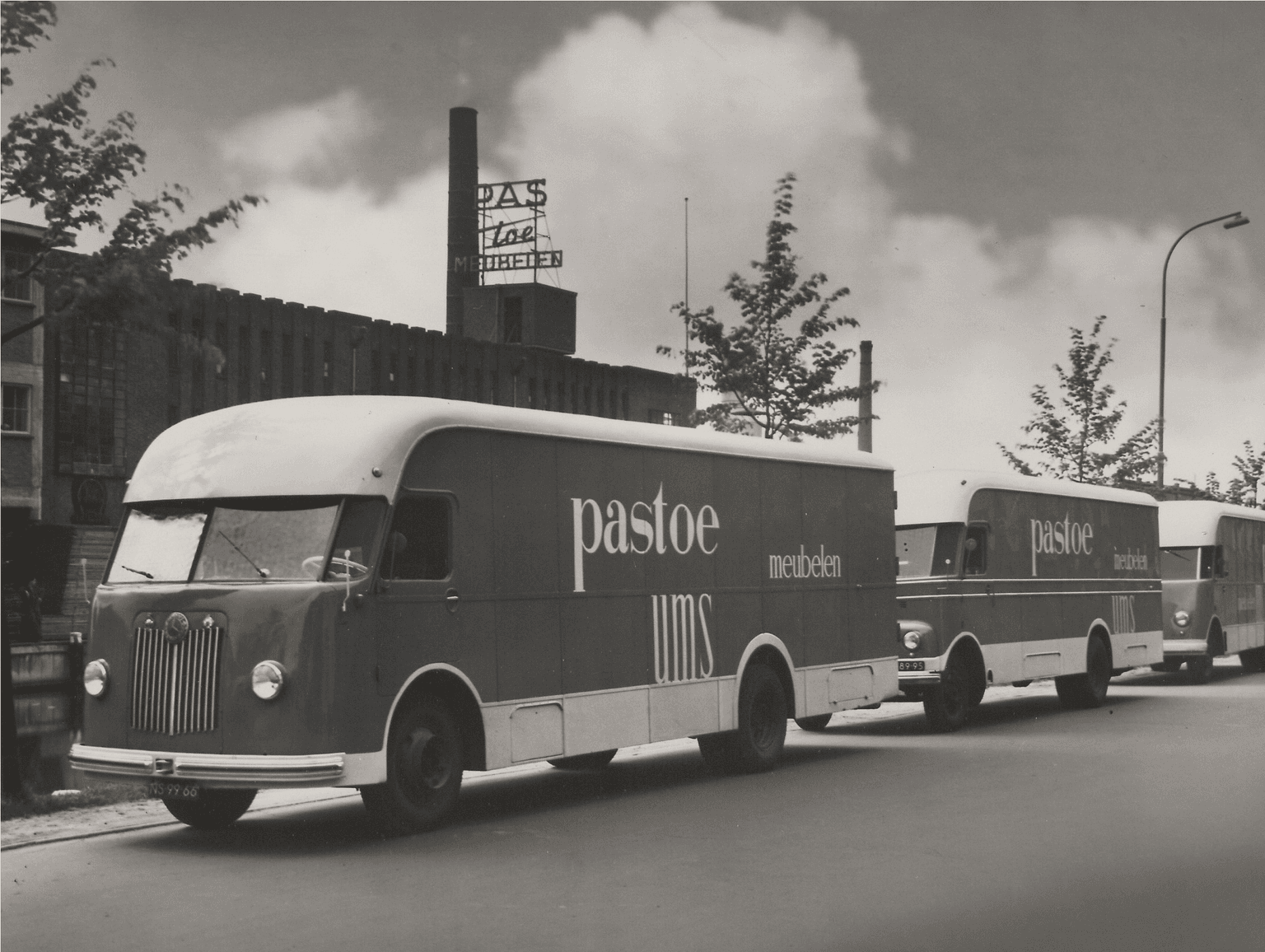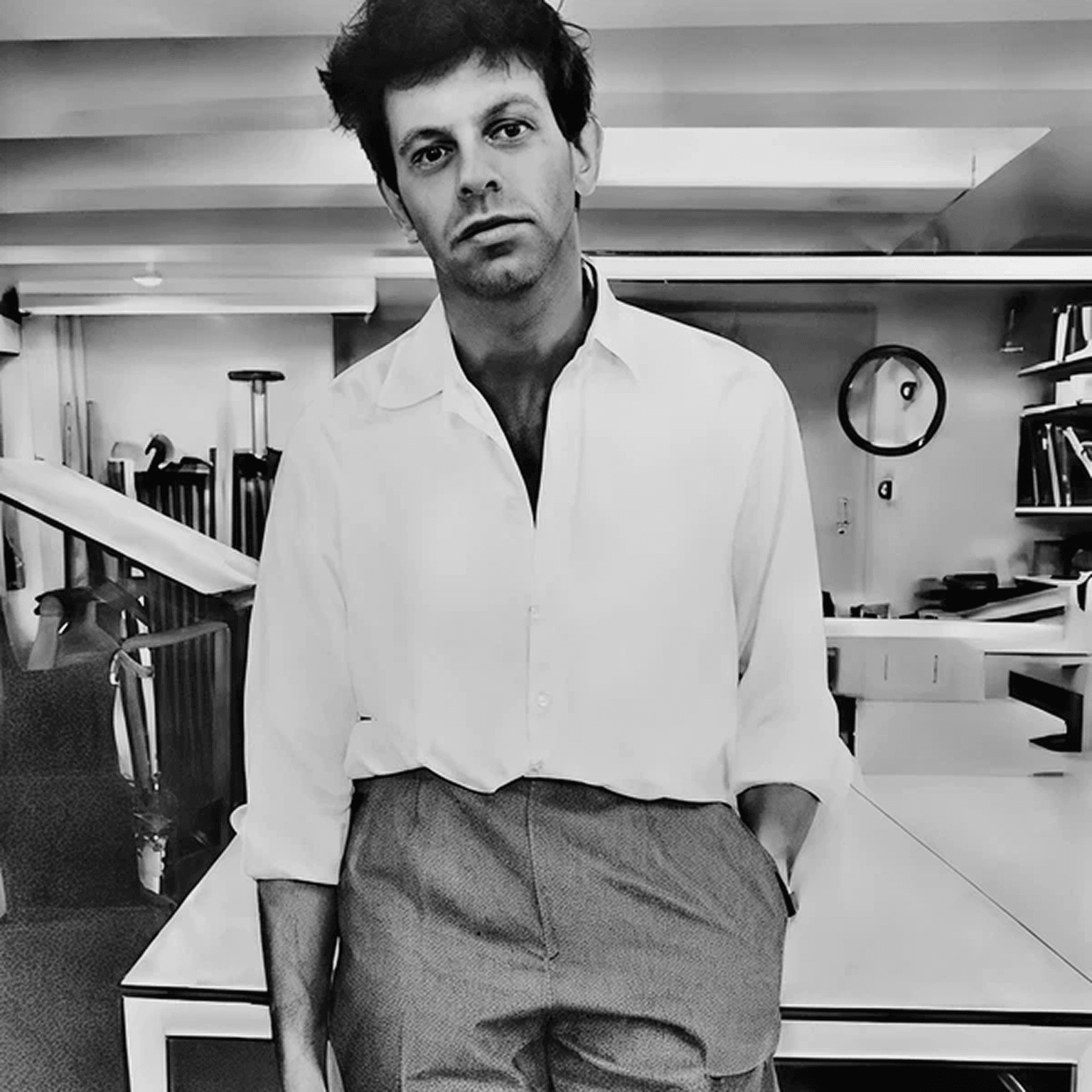For more than 110 years, Pastoe has been pushing the boundaries of furniture design. What began as a small workshop has grown into a pioneering brand, known for its leading and functional designs, along with an unwavering commitment to quality and innovation. With icons like the A’dammer and the U+N series, Pastoe has left a lasting mark on the world of furniture. Over the years, the brand has embraced change while staying true to its signature simplicity and elegance, remaining a symbol of timeless, forward-thinking design.
1913
The Pastoe story begins on April 13, 1913, when entrepreneur Frits Loeb decides to produce the chairs himself for his shop in Utrecht. He establishes the Utrechtsche Machinale Stoel- en Meubelfabriek (UMS), a small carpentry factory that quickly grows into a key player in the Dutch furniture industry. In 1918, the factory relocates to Rotsoord in Utrecht, strategically positioned by the water to streamline the transport of raw materials and finished products.

1920-1940
In the 1920s, UMS gains recognition through its presence at the Utrechtse Jaarbeurs (trade fair), where it stands out with bold exhibition spaces and innovative designs. Despite the challenges of the 1930s economic crisis and a market not yet fully ready for modern furniture, UMS stays committed to innovation, laying the foundation for its future icons in Dutch Design.

1945-1950
After World War II, UMS introduces the name Pas-Toe for the bedroom. By 1954, Pastoe becomes the official brand name, reflecting a fresh, modern approach. Aimed at a younger audience, the brand launches modern, and versatile furniture designed to fit seamlessly into any space, hence the name Pas-Toe, meaning "fits everywhere." The collections embrace a modest and contemporary aesthetic, perfectly mirroring the spirit of post-war reconstruction in the Netherlands.

1950-1960
In 1948, Cees Braakman takes the helm of his father as both manager and designer at Pastoe. He draws inspiration from his study trip to the United States, where he discovers the innovative designs of Charles and Ray Eames. The collection increasingly focuses on storage furniture, with all attention directed towards developing flexible cabinet systems that consumers can customize themselves. This groundbreaking concept comes to life in 1955 with the Pastoe naar Maat series (‘Made to Measure’), allowing customers to design their own cabinets and even expand them later.
Braakman’s designs seamlessly blend modernism with functionality, with iconic pieces like the U+N series putting Pastoe on the global map. His forward-thinking approach to design has left a lasting impact on the Pastoe collection.

1960-1980
The 1960s and ’70s were a time of continued innovation and a deeper exploration of modular furniture. Pastoe embraced a design language that was both understated and powerful, with simplicity at its core. In 1967, Cees Braakman introduced the Pastoe Kubus (cube), a modular storage system which took centre stage on an iconic poster by renowned graphic designer Dick Bruna.
Pastoe not only evolved in design but also in presentation. Promotional materials took on a contemporary feel, featuring illustrations by leading graphic designers such as Dick Bruna, Otto Treuman, Theo Stradman, and Harry Sierman. The brand’s growing reputation attracted collaborations with top architects, photographers, and artists. Interior designer Benno Premsela infused Pastoe’s collections with a unique, surreal yet glamorous touch, perfectly captured through the lens of photographer Jan Versnel.
One of Pastoe’s most enduring icons was born in 1978, the A’dammer cabinet, designed by Aldo van den Nieuwelaar. During this time, Pastoe becomes increasingly associated with the term “Dutch Design”.

1980-2000
In the 1980s, Pastoe embraced postmodern influences while staying true to its core values of simplicity and functionality. Collaborations with designers like Pierre Mazairac and Shigeru Uchida led to the creation of standout collections such as the Vision 90 series and the Furniture as Remembrance cabinets. The focus is now on creating furniture that is not only visually appealing but also flexible and adaptable to the consumer’s needs. Pastoe continues to strengthen its reputation as a pioneer of minimalist and timeless design.

2000-2024
Entering the 21st century, Pastoe set its sights on sustainability, crafting high-quality, long-lasting furniture that retained its signature simplicity. The brand focused on customizable storage solutions, honoring its legacy of flexible design. The introduction of the Leather Lounge Chair by Maarten Van Severen in 2005 highlights Pastoe’s ongoing innovation within the modern furniture industry.
In 2013, Pastoe celebrates its 100th anniversary with the jubilee exhibition Like Pastoe at the Kunsthal Rotterdam, showcasing the brand’s rich history and lasting influence. The architectural design and graphic presentation make the exhibition a complete experience, immersing visitors in a dynamic dialogue between past and present. To mark the occasion, the book Pastoe: 100 Years of Design Innovation, written by Anne van der Zwaag and Gert Staal, is also published.

2024
In 2024, Pastoe embarked on a new chapter after being acquired by a joint venture between Moooi and RSGA Design. This partnership preserves Pastoe’s legacy of groundbreaking and timeless design while allowing the brand to broaden its horizons. In 2025, the iconic designs of the A’dammer cabinet and the Wire Chair are reintroduced, marking the start of a future that is just as innovative and bold as Pastoe’s remarkable past.


